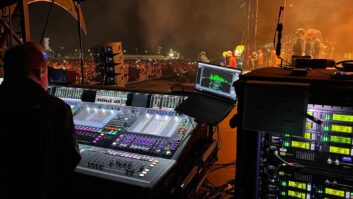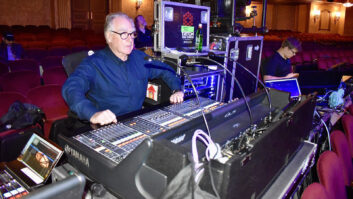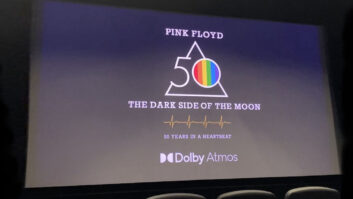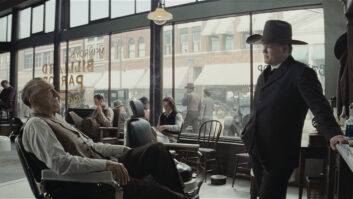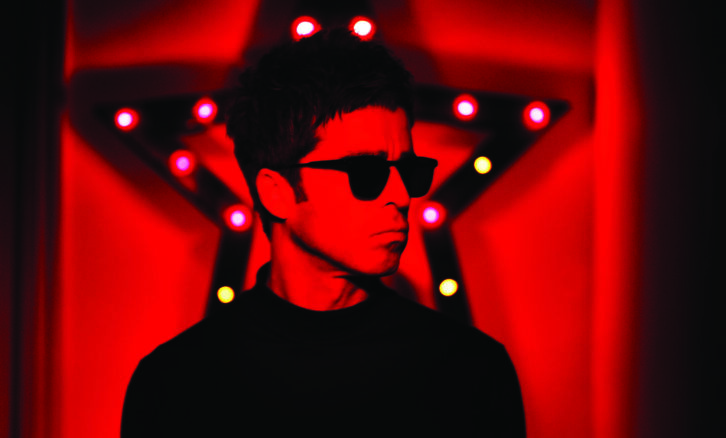
For Who Built the Moon, his third album as Noel Gallagher and the High Flying Birds, the former songwriting force behind Oasis has expanded his musical palette. Like his songs for Oasis and beyond, Who Built the Moon draws from ‘60s music, but instead of the Beatles material Gallagher is known to have a strong affinity for, this time it’s the girl groups of that era that have influenced his sound. Producer David Holmes—revered DJ and score composer for the Ocean’s Eleven etc. franchise—also steered Gallagher toward ’50s French chanteuse vibes and psychedelic moods from the ‘70s on this album.
In order to move Gallagher in the songwriting direction that Holmes had in mind, engineer Tristin Norwell had a series of appropriate drum tracks recorded with Jeremy Stacey at Snake Ranch, Hans Zimmer’s former studio in London. In addition to hundreds of drum kits, Stacey has an API desk and racks of Neve 1073s. There is also a Compex compressor that Norwell side-chained separately, all recorded onto Pro Tools.
“I have a good understanding of [Holmes’] musical tastes, which are deeply embedded in the ’60s,” says Norwell, who has worked with Holmes for the better part of 20 years and is an accomplished film music composer in his own right. “In terms of engineering, it’s interesting territory to explore because there isn’t anything that sounds like that anymore. I was going for the Ken Scott front and back mono mic technique where you’re using Coles 4038s, one behind the drummer’s ear, one in front and below of the front high tom, a beautiful vintage AKG D30 on the kick, plus a fantastic EMT 240 plate reverb. I threw up a Telefunken E LAM 251 for the ambiance and an AKG D19 over the top.”
In addition to playing Gallagher grooves from the drum tracks, Holmes put together “phenomenal mixtapes,” according to Norwell, that provided musical moods with the kind of energy that Holmes wanted to inject into Gallagher’s project.
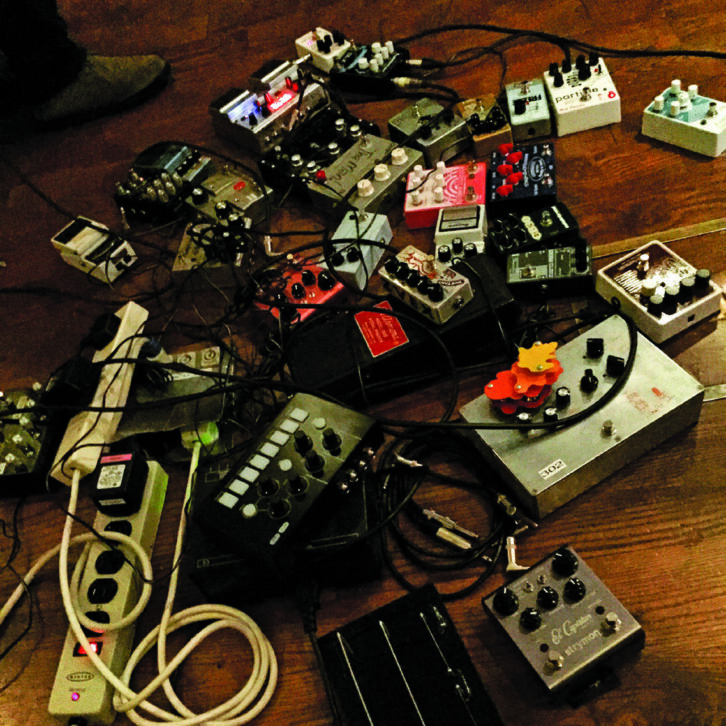
In the first week of demo’ing at Holmes’ home studio in Belfast, Ireland, four of Who Built the Moon’s songs were written, including the lead single, “Holy Mountain.” “[Gallagher] has such a tight work ethic,” says Norwell, who went direct to Logic for these recordings—no tape. “[Holmes] encouraged him to explore and not go over old territory, which takes guts, conflicting with someone who’s written so many hits. [Gallagher] took that onboard and came back with leaner, meaner and more challenging ideas. He’s a fanatical guitar pedal collector. A lot of my job was marrying these pedals together and sequencing so there was still a clean signal left, then feeding it through this extraordinary Fender Princeton and Ampeg B-15 [Holmes] has.
“The spirit of someone’s performance is better captured from a distance,” Norwell continues. “In this particular genre, lively atmosphere is paramount. [Holmes’] live room is quite live, and running the Coles and Telefunken AK-47 in a figure-of-eight is a much more creative pattern, or in the case of acoustic on ‘Wednesday,’ it was a Wunder 47 through the Neve 1066. Whether [Gallagher] was playing an acoustic or I was amping something that had a pedal going through or even if we were doing DI pedals, they’d be amped out through the Princeton with a mic on the floor, four feet away and blended in.”
Stems from the high-end demo sessions in Belfast next went to engineer/mixer Emre Ramazanoglu, who works in Hoxa HQ Studio in London. There, Gallagher used the stems to write and track complete songs. Ramazanoglu captured his guitar sounds with a Sennheiser 441, and an AKG 414ED and C12 capsule aligned manually and taken discretely into a Neve 31102. Once again, Gallagher’s staggering collection of guitar pedals came strongly into play, not only for his guitar sounds but also for keyboards. The pedals—roughly 300 of them—along with a lot of re-amping by Ramazonoglu, particularly using Selmer transistor amps, add a great deal to the texture and lo-fi sound of songs such as “Holy Mountain.”
“I do a lot of parallel work,” says Ramazanoglu who works in Pro Tools. “I keep a dry uncompressed signal, which is dynamic and clear, and then a distorted signal alongside it. You get the benefits of the compression making the tone fuller and phatter with the dynamics of the real performance so it doesn’t sound so official. That’s definitely on the drum sound.”
“Beautiful World” is an example of this, where the drum channel shapes the song with layers of buses with different distortions and processing and parallel effects, with a huge spring reverb on it all. The toms are miked with c-ducer contact microphones. These sound odd solo but make the most of the snare sound, which was picked up through them and went through the tom channel’s reverb and parallel compression.
“Nothing can be too dirty,” says Ramazanoglu of working with Holmes. “If you don’t really understand that world of texture and dirt and emotion through low resolution, it becomes crass, uninteresting and uninspiring. When you get into that world it’s refined in its own weird way. It’s making lo-fi grainy production, but with full-range, big-sounding tracks with bottom end.”
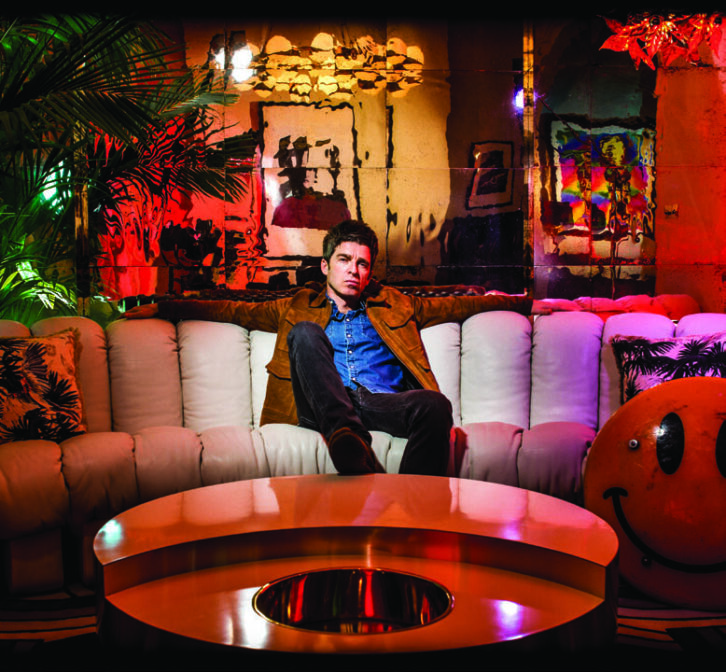
Ramazanoglu achieves this in the mixing stage by separating groups of instruments, culminating in multiple mix buses. “You are able to control and manage the different energies in the mix, allowing you to have very dense music that is still punchy and full-range rather than just a wodge of distortion and washed-out sound,” explains Ramazanoglu, who mixes on full-range Geithain RL906 monitors with a sub. This is in contrast to Gallagher’s preference; he likes to mix via limited, small-range and mid-focused Yamaha NS10s.
“By the time [Gallagher] arrives, I will have a fully controllable, multi-bused, separated and very controllable mix,” says Ramazanoglu. “I can move anything anywhere and still maintain my energy spread within the mix. All my mixes are super-interactive, and everything affects everything else. I use an unbelievable amount of multi-saturation and console emulation and tape emulation and lots of dynamic stuff that overall is somewhat as forgiving as a lovely desk.”
Ramazanoglu continues, “It’s not that in-the-box mixing gives you less, it gives you everything, all the time. You have to limit things in the way you want by making a controllable environment per song. The whole way this works is by making something in the box that’s quite forgiving so you can do quite bold moves and make it always sound pleasing.”
